In the Pacific, the United States Air Force (USAF) is at a critical juncture and faces an urgent challenge: its long-standing reliance on large static bases is now increasingly threatened, particularly by escalating Chinese provocations. In response, the emergence of the Agile Combat Employment (ACE) concept becomes imperative, underscoring the need for flexibility and dispersion to ensure the security of U.S. military operations in the region. However, logistical challenges, decentralized implementation, and the need for effective defenses present formidable obstacles. The article emphasizes that the success of ACE depends on overcoming these challenges, with a focus on improved defenses, streamlined logistics, and inter-service coordination for future geopolitical uncertainties.
Traditional Basing Vulnerabilities
Since the demise of the Soviet Union, the U.S. Air Force (USAF) has operated primarily from large forward operating bases for decades, reflecting the declining risk of conflict with a peer adversary. [1] But it now seems quite clear that the general impression of large air bases as virtual sanctuaries was at best a historical anomaly and at worst a complete delusion. [2] The U.S. Air Force has 33 permanent overseas bases, the locations of all of which are well known to all potential adversaries, and it is quite clear that denying the U.S. military the ability to operate from these bases would be the first step in significantly hampering the U.S. ability to act and project power in any potential conflict. [1]
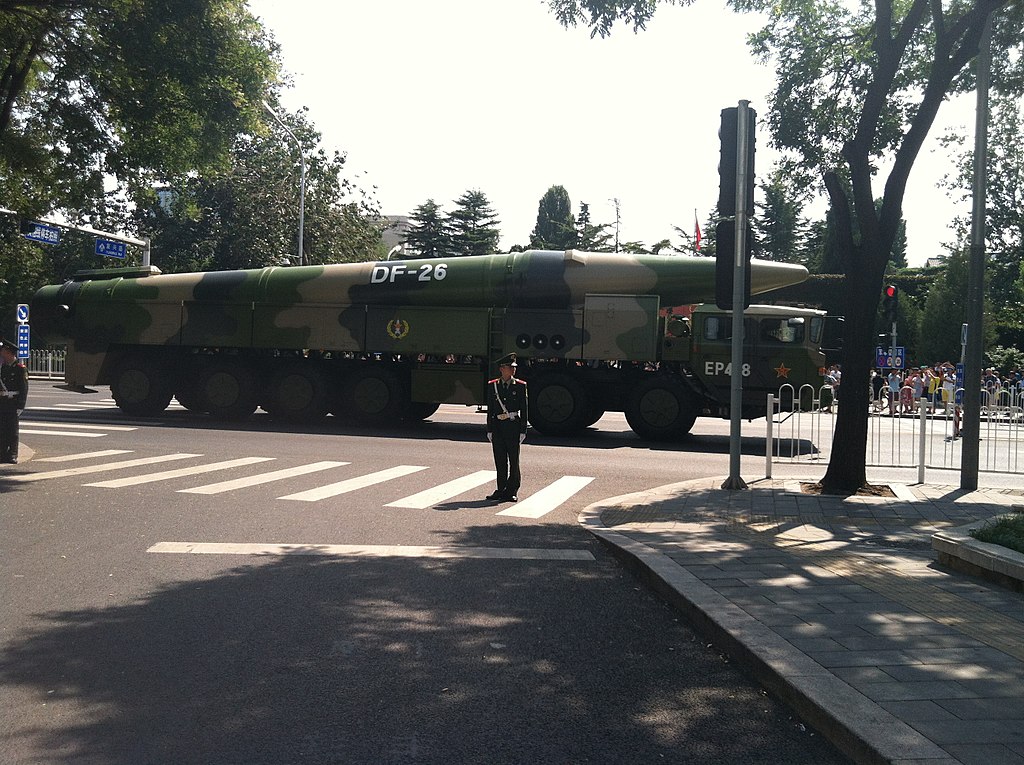
The situation is particularly dire in the Pacific. Recent Pentagon reports on China’s People’s Liberation Army (PLA), along with several analyses published in recent years, assess that the PLA is rapidly expanding its capabilities to conduct strikes against regional air bases, logistics and port facilities, communications, and other ground-based infrastructure. [1] [3] [4] U.S. bases in Japan and South Korea are almost all located less than 1,000 km from Chinese territory, making them highly vulnerable to a growing number of Chinese short- and medium-range ballistic missiles. [3] Andersen Air Force Base on Guam, a small island nearly 3,000 km from China, which has long been safe from the range of PLA missiles, is now also threatened by new intermediate-range ballistic missiles and an arsenal of long-range cruise missiles that make the U.S. Department of Defense particularly wary as they are harder to detect and intercept. [5]
The strength of the U.S. position in Asia depends on the ability of the U.S. military to operate in the region, but developments in recent years make it clear that any large-scale deployment of aircraft to bases in the Pacific would be very dangerous. At the same time, the most recent Heritage Foundation report assessing the U.S. military concluded that the USAF „continues its downward spiral“ and assessed its capabilities as „very weak“. [6] The report criticized the USAF’s questionable deployability and ability to withstand a conflict with a peer competitor, in addition to lagging operational readiness rates and aircrew training. [6] The USAF appears to be aware of its shortcomings, as Secretary of the Air Force Frank Kendall expressed concern about the USAF’s readiness to face another great power in open conflict, stating that the Air Force is not as ready as it could be by a significant margin. [7]
The U.S. therefore faces the challenge of denying its adversaries easy targeting and the perceived vulnerability that comes from having a small number of known fixed locations.
Strategic Shift in Response to Challenges
In response to this challenge, the Air Force decided to pursue a new way of war. Under the leadership of Secretary of the Air Force Frank Kendall and former Air Force Chief of Staff and current Chairman of the Joint Chiefs of Staff, Gen. Charles Q. Brown Jr., a new operating concept called Agile Combat Employment (ACE) was introduced. [1] ACE reduces reliance on large, vulnerable bases and instead presents a flexible, hub-and-spoke system. This system takes advantage of the flexibility of airpower to complicate enemy targeting by rapidly dispersing forces from central hubs to remote spoke locations. [1] This emphasis on dispersion is not unique to the Air Force, but can also be seen in the Marine Corps‘ new force design, which calls for the dispersion of small groups of Marines to islands throughout the Western Pacific, where they would be equipped with anti-ship missiles to interdict the Chinese fleet. [1]
In order to be able to disperse to different locations, the USAF is in the process of increasing the number of its bases in the Pacific over the next decade. [8] The location where most ACE operations are exercised is around the aforementioned Andersen Air Force Base on Guam. [9] In order to make this Pacific hub, which is the U.S. entry point to Asia, less vulnerable, the head of Pacific Air Forces, Kenneth S. Wilsbach, has advocated the refurbishment of old airstrips and airfields in the Pacific that were used extensively during World War II. [10] One of these sites is the small island of Tinian, which is currently being rebuilt to serve as an alternative to the Guam base. [11]
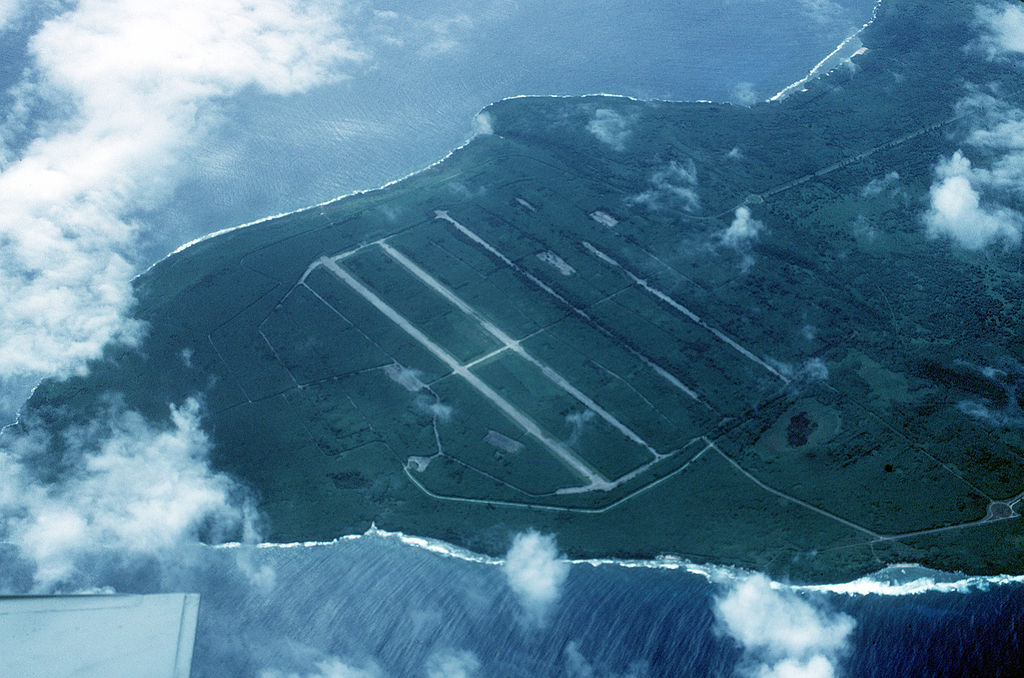
But for ACE to work, it must be successfully introduced and exercised throughout the region. [9] In addition to the vicinity of Guam, the USAF also conducts ACE operations in Japan, where USAF aircraft are based at Yokota, Misawa, and Kadena Air Bases. [9] Kadena Air Base on the island of Okinawa has long been considered particularly important because it is the closest base to Taiwan and the only USAF base within the unrefueled combat radius of 1,000 km of the Taiwan Strait. [3] However, this proximity to the potential center of conflict and the Chinese coast is now more of a hindrance than an advantage for Kadena. It makes it ill-positioned to permanently station a large number of aircraft because it is virtually undefendable in the event of a major Chinese missile attack. [3] [12] Part of the ACE philosophy and strategy was therefore the introduction of a rotational force at Kadena, rather than a permanent one, which will put more emphasis on the importance of mobility and flexibility along with an emphasis on finding new locations for dispersal. [13]
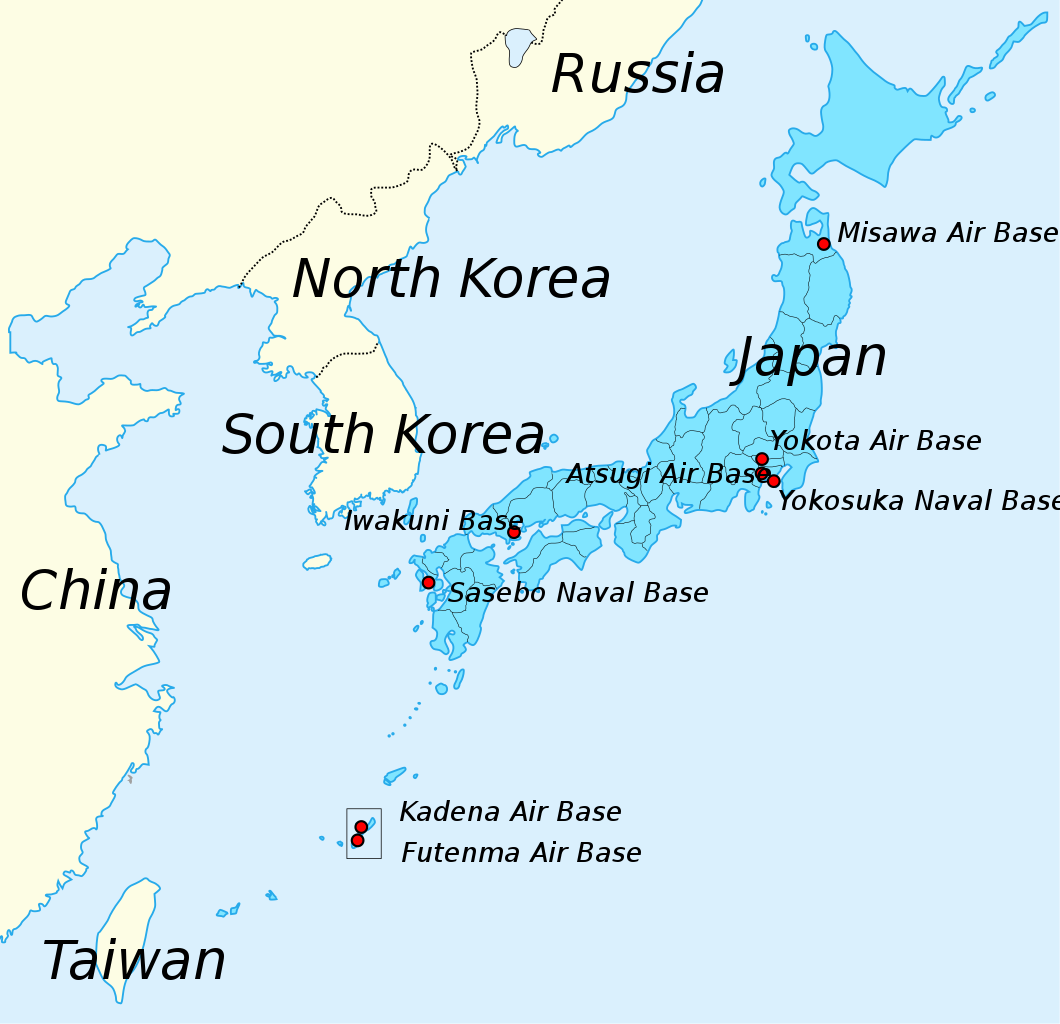
One of these new locations is the Philippines, with which the U.S. signed the Enhanced Defense Cooperation Agreement (EDCA) in 2014, giving U.S. troops rotational military access to five selected military bases in exchange for U.S. investment in developing those bases. [14] [15] U.S.-Philippine relations have been strained in recent years, but since the election of new Philippine President Marcos in 2022, relations have stabilized and begun to warm significantly. [15] Last year, the U.S. was granted access to four new bases under EDCA. [15] Bases in the Philippines could then serve as potential spoke in the event of a conflict in the Taiwan Strait, but more importantly in the event of an escalation in the South China Sea, where the U.S. does not have a permanent base.
Another location that has already been part of some ACE-like operations is bases in Australia, with which the U.S. is strengthening ties through projects such as Australia’s acquisition of its own nuclear-powered submarines, cooperation on unmanned aircraft, or command and control operations. [1] [9] Increased cooperation between Washington and Canberra could then lead to the creation of a new hub in the ACE spoke. The U.S. has also pledged $7.1 billion in its 2024 budget to the Marshall Islands, Micronesia, and Palau to renew treaties with these countries that provide U.S. military basing options, with Palau being one of the locations where ACE exercises have already taken place. [1]
Logistical and Operational Hurdles
While there seems to be a consensus that the need for dispersion, and thus the need for ACE, is here to stay, the concept is not without flaws. The main challenge to the resilience of ACE is the additional strain on a logistics network that will be constituted by dispersed operations across the Pacific in austere locations. [16] [17] For example, in terms of fuel alone, the USAF operates a large air refueling fleet as part of the Air Mobility Command, but the vast majority of U.S. military fuel is transported over long distances by sea, which could significantly limit the flexibility of ACE operations in the event of conflict. [1] This logistical issue is further complicated by the fact that while ACE is described as an operational concept in a dedicated document, its implementation is highly decentralized, and the exact form of ACE is in the hands of individual base commanders, who have authority over implementation due to differences in equipment and peculiarities of different bases. [8]
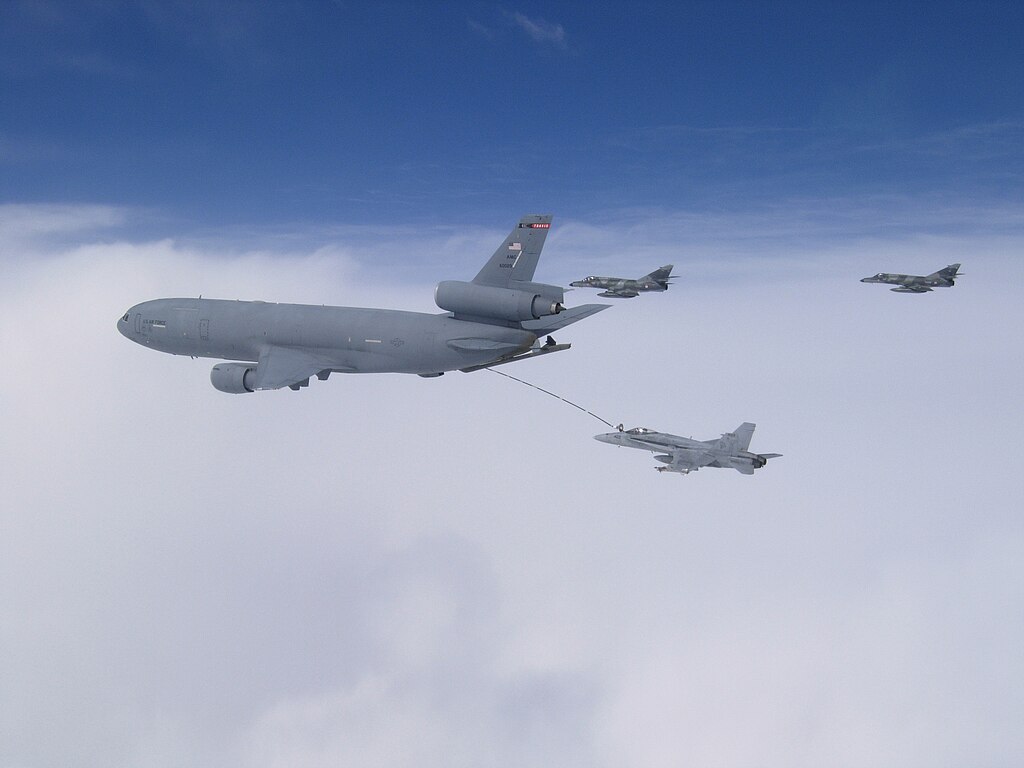
The issue is not only logistics, but also active defenses to shoot down incoming missiles and passive defenses such as hardened shelters and camouflage. [14] ACE calls for assets to be rapidly deployed in small teams to various remote locations, so the base defenses at these locations must adapt to this concept and be lean, light, and agile. [5] Members of the U.S. Congress have inquired about the USAF’s plans to defend remote or forward deployed airfields as part of ACE, as the current state of airbase defense has been described by some as „very poor across the board“. [5] [18]
The Air Force has recognized the need for better base defenses and has made „resilient basing“ a top priority. [1] In practice, this means a greater emphasis on passive defenses such as the ability to repair runways, harden facilities against missile and cyber attacks, and the ability to operate in the face of electronic jamming. [1] In its proposed budget for fiscal year 2024, the USAF plans to invest $1.2 billion in resilient basing to „begin long-term projects such as infrastructure improvements to non-traditional airfields, pre-positioning of assets, and agile communications“. [1]
The Department of Defense has announced that the services are focused on cooperating like never before on logistical challenges, and the Air Force and Army are currently working together to improve air defenses, but despite this announcement, the poor state of air defenses at bases is largely due to the issue of delegation of responsibility between the Army and the Air Force. [17]
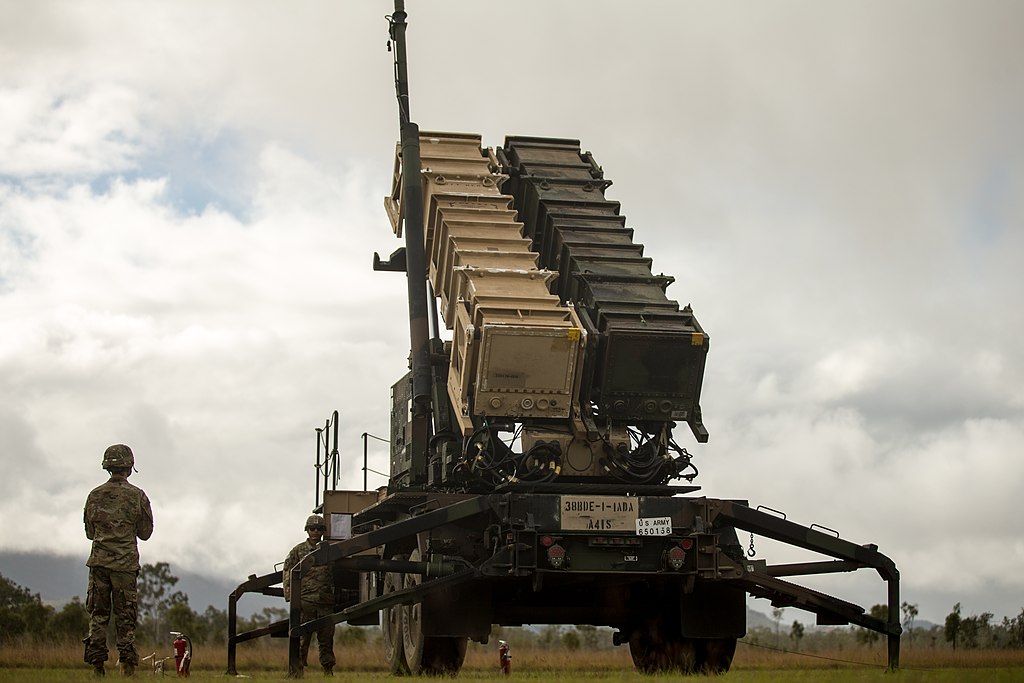
The Army is responsible for hard missile-based air defenses and has focused primarily on theater-level air defenses such as the Patriot or Terminal High-Altitude Area Defense (THAAD) systems. [15] While these systems are very effective at shooting down potential enemy missiles, they are also very expensive, not very mobile, and their long ranges make them unsuitable for protecting small operating bases. [5] [17] As China deploys more accurate ballistic and cruise missiles, it currently has the capability to suppress or destroy most of these theater-level air defenses and the bases they are designed to protect. [1] More suitable for base defense would then be mobile Shorter Range Air Defense (SHORAD) systems, which are smaller targets, less lucrative to use very expensive ballistic and cruise missiles against, and able to relocate after intercepting enemy missiles. But while the Army has made SHORAD and other air and missile defense capabilities one of its top five priorities, Mark Gunzinger of the Mitchell Institute for Aerospace Studies commented, „It does not appear that the Army has made defending air bases one of its top five priorities“. [5]
The Air Force has then taken responsibility for looking to electronic warfare, unmanned aerial systems, directed energy, cyber operations, and other advanced and often experimental concepts to provide base defense primarily against drones and cruise missiles. [17] However, many of these technologies are not fully mature and can only work in concert with other Army air defense systems. [17]
Conclusion
In conclusion, the United States Air Force (USAF) faces a critical challenge in the Pacific as its traditional reliance on large, fixed bases becomes increasingly vulnerable to evolving threats, particularly from China. The introduction of the Agile Combat Employment (ACE) operational concept represents a strategic shift toward flexibility and dispersion to counter the capabilities of potential adversaries.
Ongoing efforts to refurbish old airfields, establish rotational forces, and expand partnerships with nations such as the Philippines and Australia demonstrate a commitment to mitigating the basing problem.
But while ACE is a promising strategy, it is not without its hurdles. The logistical burden of distributed operations, coupled with the need for robust defenses against missile threats, requires a comprehensive and coordinated effort. The decentralized implementation of ACE, combined with the delegation of responsibilities between the Army and Air Force, raises concerns about the effectiveness and uniformity of base defenses.
The consequences of not addressing these challenges are profound. A weakened ability to operate in the Asia-Pacific region not only threatens U.S. strategic interests, but also affects regional stability. The potential for conflict escalation and limitations in responding effectively to emerging threats underscore the urgency of sustained investment, collaboration, and innovation in addressing USAF basing challenges. As the global geopolitical landscape continues to evolve, the successful implementation of ACE and resilient basing practices will be critical to maintaining U.S. military dominance and ensuring regional security in the years ahead.
Article reviewed by Kristýna Drmotová and Martin Zilvar.
Sources
[1] Air & Space Forces Magazine. (2023). Operational Imperative No. 5 – Resilient Basing. Air & Space Forces Magazine. Retrieved from https://www.airandspaceforces.com/article/operational-imperative-no-5/.
[2] Lynch, Ch., Costello, R., Heim, J.L., Karode, A., Mills, P., Tripp, R.S., & Vick, A.J. (2023). Operational Imperative: Investing Wisely to Bolster U.S. Air Bases Against Chinese and Russian Attacks. RAND Corporation. Retrieved from https://www.jstor.org/stable/resrep47141.
[3] Heginbotham, E., Nixon, M., Morgan, F.E., Heim, J.L., Hagen, J., Tao Li, S., Engstrom, J., Libicki, M.C., DeLuca, P., & Shlapak, D.A. (2015). The U.S.-China Military Scorecard: Forces, Geography, and the Evolving Balance of Power, 1996–2017. RAND Corporation. Retrieved from https://www.rand.org/pubs/research_reports/RR392.html.
[4] U.S. Department of Defense. (2023). Military and Security Developments Involving the People’s Republic of China 2023. U.S. Department of Defense. Retrieved from https://www.defense.gov/News/Releases/Release/Article/3561549/dod-releases-2023-report-on-military-and-security-developments-involving-the-pe/.
[5] Hudson, A. (2021). Defending Forward Bases. Air & Space Forces Magazine. Retrieved from https://www.airandspaceforces.com/article/defending-forward-bases/.
[6] Venable, J. (2024). 2024 Index of U.S. Military Strength: U.S. Air Force. Heritage Foundation. Retrieved from https://www.heritage.org/military/an-assessment-of-us-military-power.
[7] Hadley, G. (2024). Air Force Now ‘Very Weak’, New Report Says, But Space Force Is Gaining Strength. Air & Space Forces Magazine. Retrieved from https://www.airandspaceforces.com/heritage-report-air-force-readiness-down/.
[8] Decker, A. (2023). Air Force expanding number of bases in Pacific over next decade. Defense One. Retrieved from https://www.defenseone.com/threats/2023/08/air-force-expanding-number-bases-pacific-over-next-decade/389834/.
[9] Mahsdie, A. (2022). ACE Is Now ‘Normal Ops’ in Pacific, but Utility in Conflict Requires More Partners. Air & Space Forces Magazine. Retrieved from https://www.airandspaceforces.com/ace-now-normal-ops-pacific-utility-in-conflict-requires-more-partners/.
[10] Hadley, G. (2023). Getting Agile in the Pacific: Clearing WWII Airfields, Adding More Vertical Lift. Air & Space Forces Magazine. Retrieved from https://www.airandspaceforces.com/agile-pacific-wwii-airfields-vertical-lift/.
[11] Gordon, Ch. (2023). Photos: F-22s Deploy to Tinian for First Time as Part of ACE Exercise. Air & Space Forces Magazine. Retrieved from https://www.airandspaceforces.com/photos-f-22s-deploy-to-tinian-for-first-time-as-part-of-ace-exercise/.
[12] Pettyjohn, S.L., Metrick, A., & Wasser, B. (2022). The Kadena Conundrum: Developing a Resilient Indo-Pacific Posture. War on the Rocks. Retrieved from https://warontherocks.com/2022/12/the-kadena-conundrum-developing-a-resilient-indo-pacific-posture/?__s=id58vz9mzj1ghitsmd7b.
[13] Nakamura, R. (2023). U.S. weighs returning smaller permanent fighter force to Okinawa. Nikkei Asia. Retrieved from https://asia.nikkei.com/Politics/Defense/U.S.-weighs-returning-smaller-permanent-fighter-force-to-Okinawa.
[14] Asia Maritime Transparency Initiative. (2023). More Than Meets the Eye: Philippine Upgrades at EDCA Sites. Asia Maritime Transparency Initiative. Retrieved from https://amti.csis.org/more-than-meets-the-eye-philippine-upgrades-at-edca-sites/.
[15] Morales, N.J. (2023). Marcos says new military bases with US to be ‚scattered‘ around the Philippines. Reuters. Retrieved from https://www.reuters.com/world/asia-pacific/marcos-says-new-military-bases-with-us-be-scattered-around-philippines-2023-03-22/.
[16] Woody, Ch. (2023). Satellite photos show how the US Air Force is reclaiming a WWII-era airfield from the jungle to prepare to dodge Chinese missiles. Business Insider. Retrieved from https://www.businessinsider.com/satellite-photos-air-force-ace-airfield-tinian-pacific-island-2023-11.
[17] Tirpak, J.A. (2023). Air Force and Army Collaborate on Air Defense That’s Smaller and Cheaper for the Indo-Pacific. Air & Space Forces Magazine. Retrieved from https://www.airandspaceforces.com/air-force-army-air-defense-distributed-operations/.
[18] Roza, D. (2023). Lawmakers Want to Know: How Will The Air Force Defend Austere ‘ACE’ Bases? Air & Space Forces Magazine. Retrieved from https://www.airandspaceforces.com/air-force-agile-combat-employment-base-defense/.





